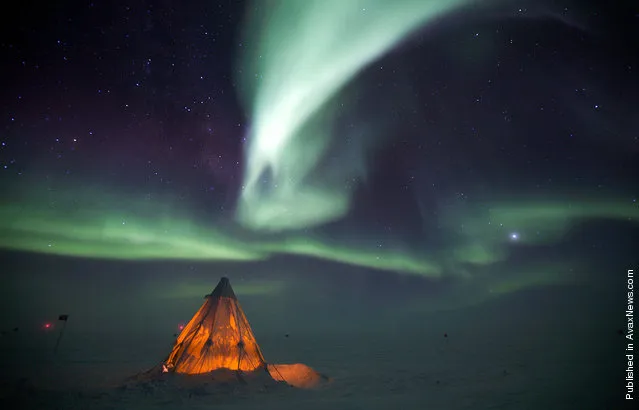
The aurora australis provides a dramatic backdrop to a Scott Tent at Amundsen-Scott South Pole Station on July 14, 2009. (National Science Foundation/Patrick Cullis)
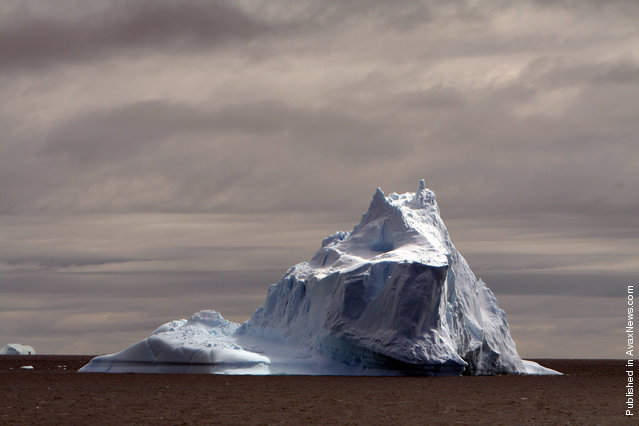
A large iceberg floats off the coast of Antarctica, seen on January 1st, 2010. (Photo by Ben Stephenson/CC BY)
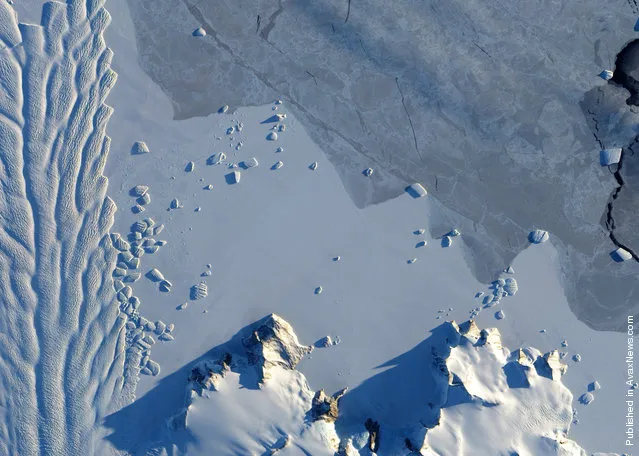
The Matusevich Glacier flows toward the coast of East Antarctica, pushing through a channel between the Lazarev Mountains and the northwestern tip of the Wilson Hills. Each of the smaller blocks measure nearly one kilometer across. After passing through the channel, the glacier has room to spread out as it floats on the ocean. On September 6, 2010, the Advanced Land Imager (ALI) on NASA's Earth Observing-1 (EO-1) satellite captured this natural-color image. (NASA Earth Observatory/Jesse Allen and Robert Simmon)
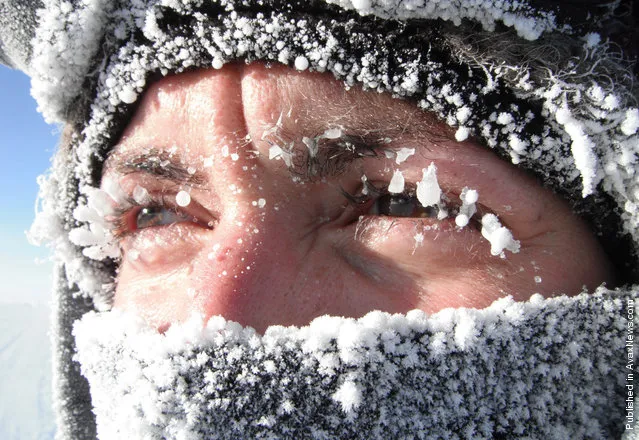
South Pole “fuelie” Rose Meyer gets pretty cold when performing her job fueling airplanes at Amundsen-Scott South Pole Station on October 26, 2010. The warmest temperature recorded that week at Pole was -37.1C (-34.8F) and the coldest temperature was -50.2C (-58.4F). (National Science Foundation/Kristina “Kricket” Scheerer)
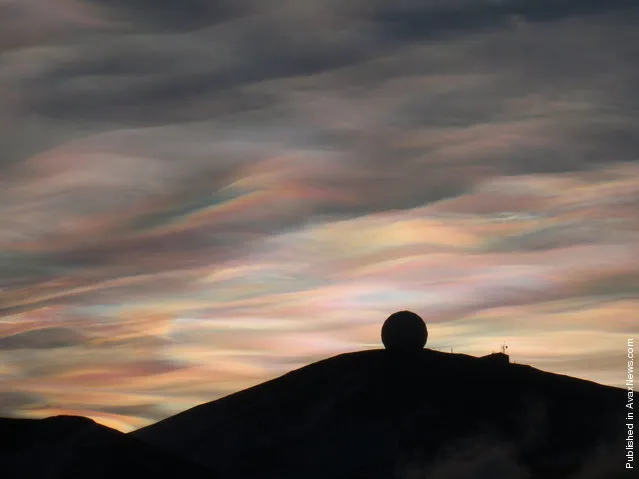
Nacreous Clouds over the NASA Radome (a weatherproof structure housing a 10 meter antenna inside). Nacreous clouds (or Polar stratospheric clouds) form high in the dry stratosphere, catching sunlight well after dusk, displaying brilliant colors. (Photo by Alan R. Light/CC BY)
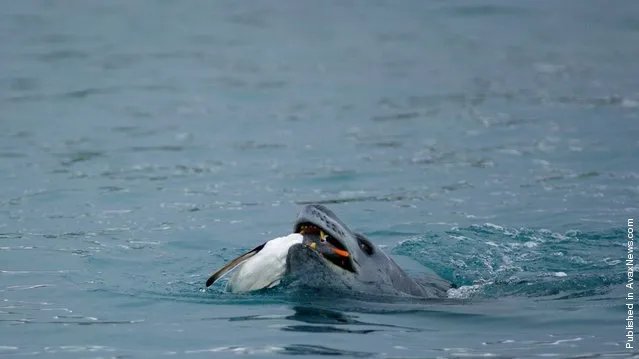
A leopard seal captures a Gentoo penguin near Palmer Station, Antarctica on April 4th, 2009. (National Science Foundation/Sean Bonnette)
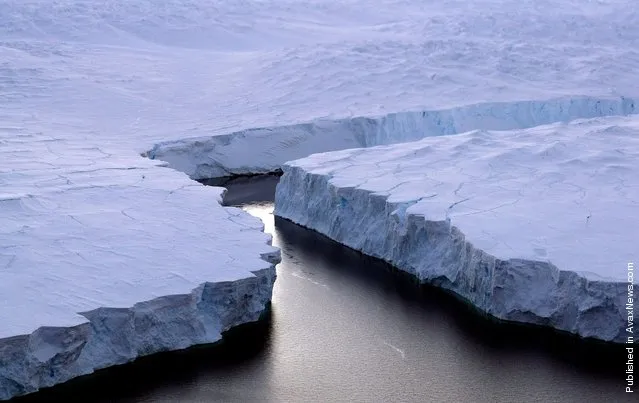
An enormous iceberg, right, breaks off the Knox Coast in the Australian Antarctic Territory on January 11, 2008. (AP Photo/Torsten Blackwood)
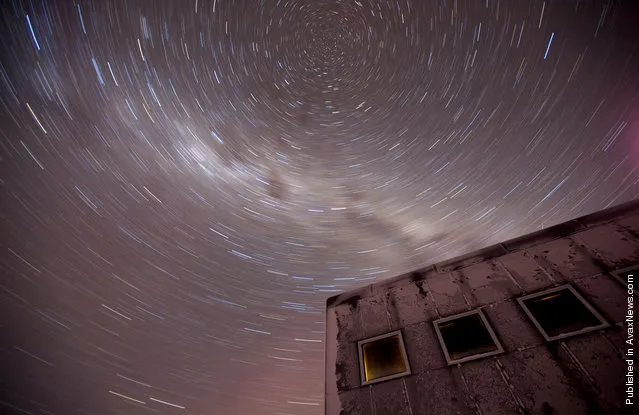
A 20-minute exposure reveals the southern celestial axis above the new elevated station at Amundsen-Scott South Pole Station on July 21, 2009. At the poles, scientists can study a fixed point in the sky for months and years, whereas in the middle latitutes the stars “move” across the night sky. The white cloudy streak is the Milky Way. (National Science Foundation/Patrick Cullis)
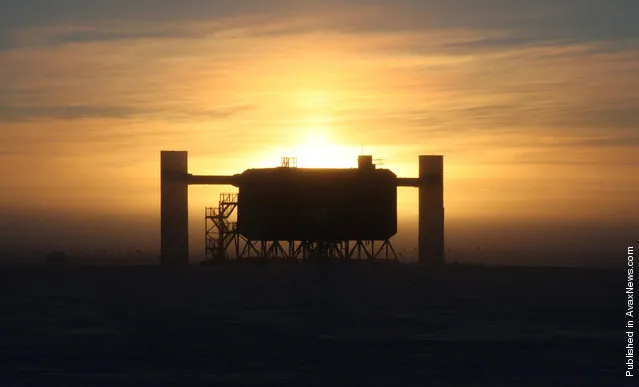
A silhouette of the IceCube neutrino detector facility at Amundsen-Scott South Pole Station, sen on April 2nd, 2008. There are 2 towers, east and west for receiving cables from the large matrix of detectors buried in the ice below. (National Science Foundation/Keith Vanderlinde)
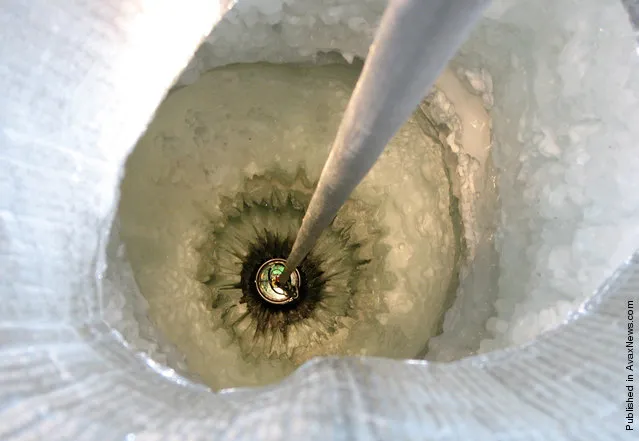
A Digital Optical Module (DOM) is lowered into a 2,500 meter-deep hole in the ice on January 4th, 2006, part of the IceCube Neutrino Observatory. This was the last of the 5,160 DOMs deployed on 86 different “strings”, suspended in ice some 1,400 meters below the surface, forming an array of neutrino detectors occupying one cubic kilometer. (National Science Foundation/Mark Krasberg)
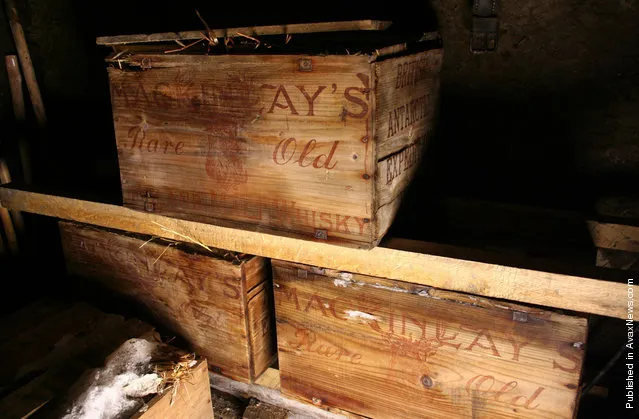
In this handout photo taken Friday, February 5, 2010 and provided by Antarctic Heritage Trust Monday, February 8, 2010, Crates of Scotch whisky and two of brandy are seen after they have been recovered by a team restoring an Antarctic hut used more than 100 years ago by famed polar explorer Ernest Shackleton. (AP Photo/Antarctic Heritage Trust)
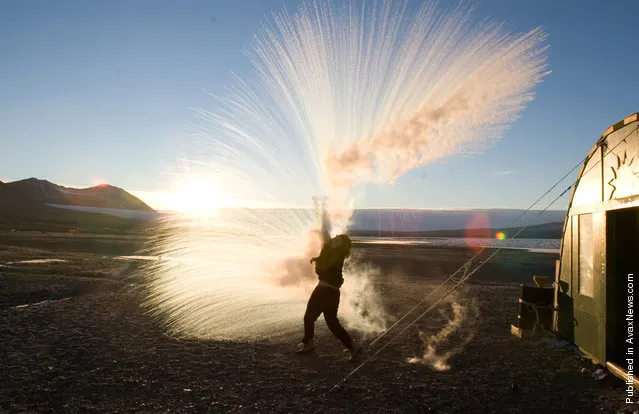
Long Term Ecological Research (LTER) field team member Anna Bramucci throws hot water into the air to watch it turn to ice crystals and vapor on a -25 F (-32 C) day at Lake Fryxell field camp in Taylor Valley, Victoria Land on March 30, 2008. (National Science Foundation/Chris Kannen)
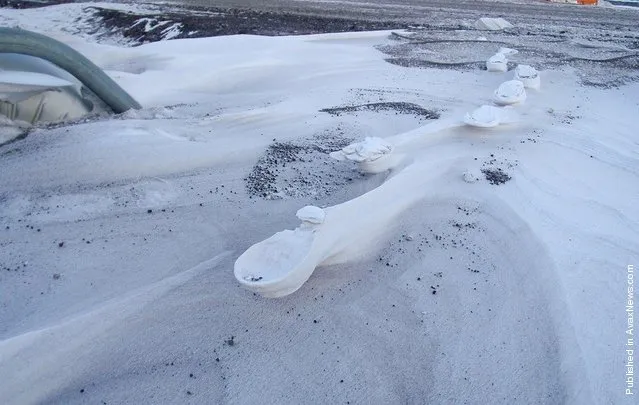
Raised footprints in the Antarctic snow. After a storm, the loose snow surrounding the compacted snow under a footprint is scoured away by the wind, leaving an elevated strange-looking footprints. (Photo by Alan R. Light/CC BY)
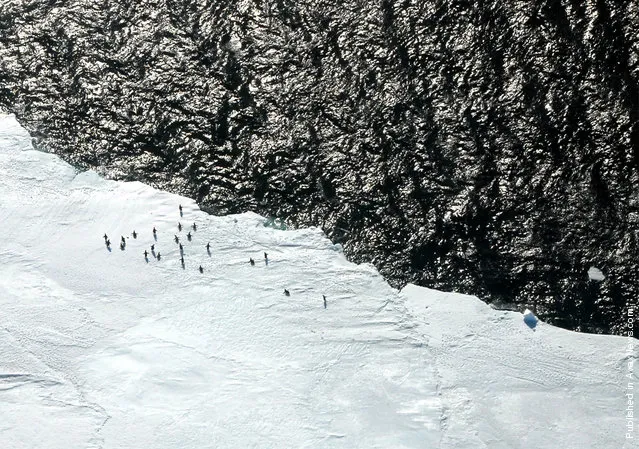
Adelie penguins along the ice edge in the Ross Sea, seen on January 12, 2010. (National Science Foundation/Robyn Waserman)
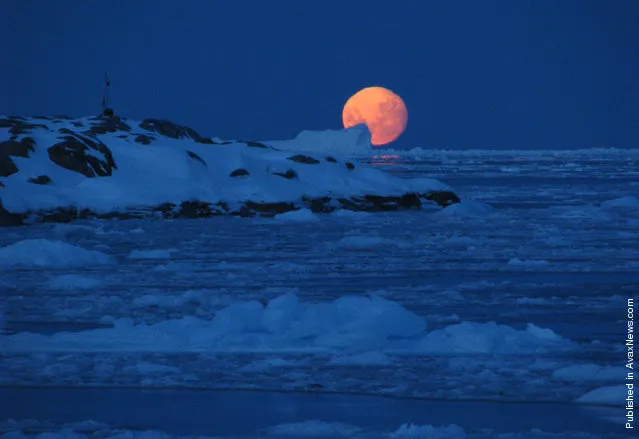
The moon setting behind Bonaparte Point, Anvers Island on September 2, 2009. (National Science Foundation/Ken Keenan)
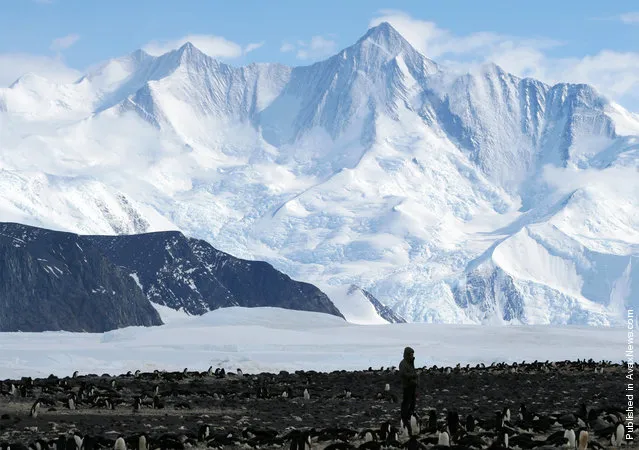
Adelies at Cape Hallett, along the Borchgrevink Coast, Antarctica on November 29, 2009. The Admiralty Mountains can be seen in the distance. (National Science Foundation/Jessy Jenkins)
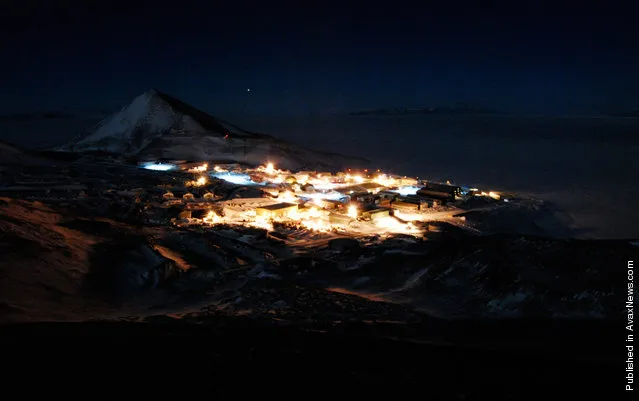
McMurdo Station as seen in the darkness of winter, on May 6, 2009. About 150 people spend the seven months of winter isolation at McMurdo, mostly doing maintenance repairs and preparing the station for the busy austral summer season which begins in October. The sun went down in late April and did not rise again until August. (National Science Foundation/James Walker)
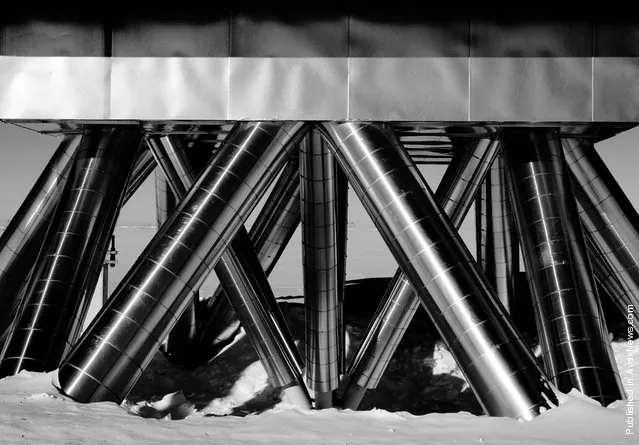
The base of the South Pole Telescope (SPT), seen on January 21, 2010. The 10-meter parabolic dish on top of this base is capturing signals of cosmic microwave background radiation. (National Science Foundation/Daniel Luong-Van)
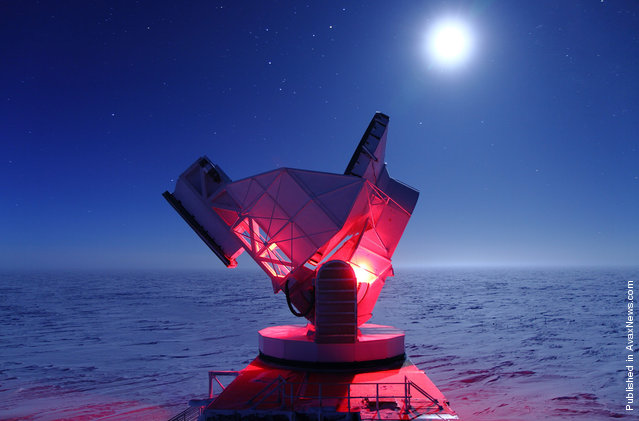
Red lights help maintenance workers doing routine repairs on the South Pole Telescope (SPT) on August 19, 2010. (National Science Foundation/Daniel Luong-Van)
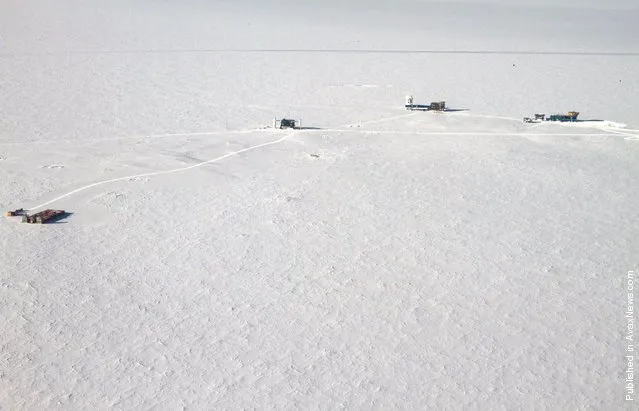
The “Dark Sector” at Amundsen-Scott South Pole Station is so named due to the absence of radio and light wave interference for the telescopes located there. The buildings on the left are the IceCube drill site facilities. The next building is the Ice Cube Laboratory (ICL). The third building is the Dark Sector Lab (DSL) with the South Pole Telescope and Bicep II Telescope. The building at right is the Martin A. Pomerantz Observatory (MAPO). Photo taken on February 3, 2011. (National Science Foundation/Robert Schwarz)
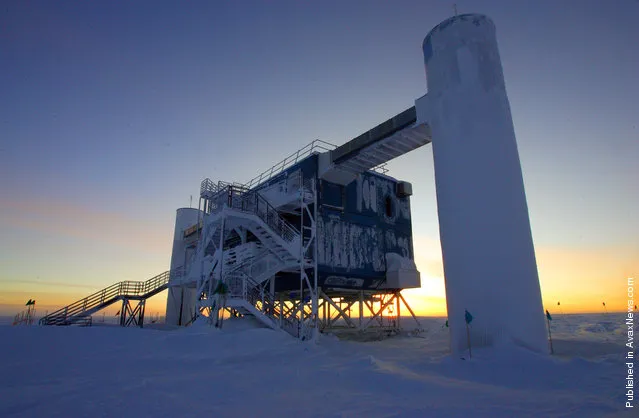
The Ice Cube Laboratory at Amundsen-Scott South Pole station on September 20, 2010, as dawn was breaking after six months of darkness. Ice Cube is the world's largest neutrino detector. (National Science Foundation/Mel MacMahon)
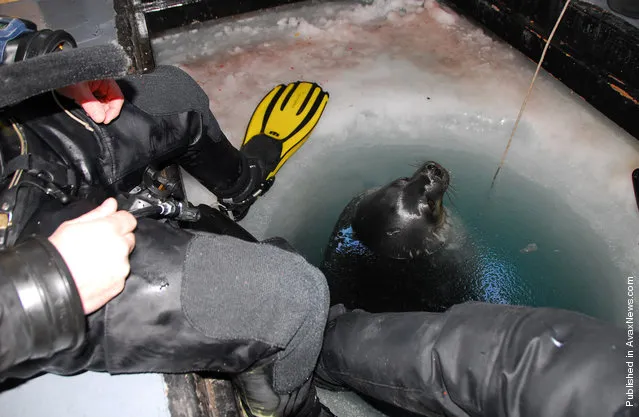
A Weddell Sea finds a human-made hole in the annual sea ice a convenient opportunity to catch her breath on November 7, 2009. (National Science Foundation/Robyn Waserman)
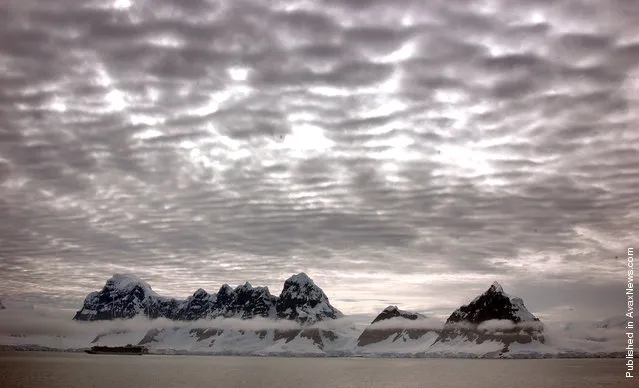
A cruise ship passes by islands along the Antarctic Peninsula on January 22, 2010. (National Science Foundation/Peter Rejcek)
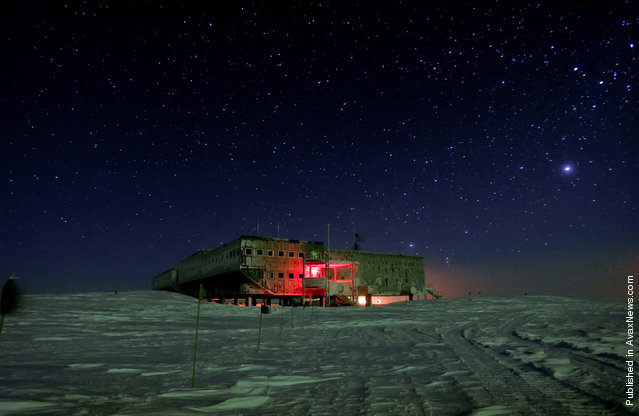
Amundsen-Scott South Pole Station experiences months of darkness. The sun dips below the horizon on March 21, after which follows several weeks of twilight before complete darkness results. Photo taken on June 25, 2009. (National Science Foundation/Jeremy Johnson)

Gale winds blow across the ocean, near Elephant Island on December 28th, 2010. (RAYANDBEE/CC BY)
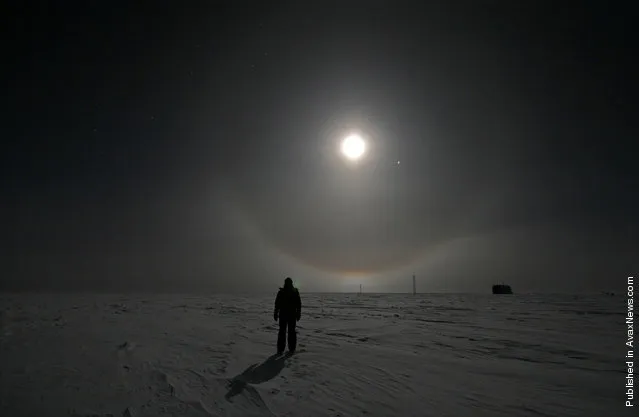
A US Antarctic Program participant enjoys a walk under a full moon at Amundsen-Scott South Pole Station on June 19, 2008. (National Science Foundation/Calee Allen)
08 Apr 2012 13:07:00,
post received
0 comments
